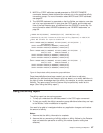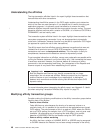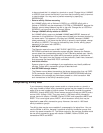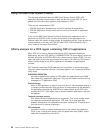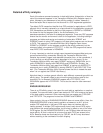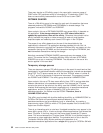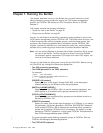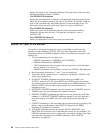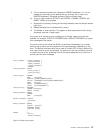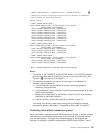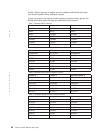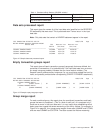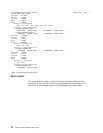
Chapter 7. Running the Builder
This chapter describes how to run the Builder that runs as a batch job to build
affinity transaction groups suitable for input to the CICS system management
product, the CICSPlex SM element of CICS Transaction Server for OS/390
Release 3.
This chapter contains the following information:
v “Syntax for input to the Builder” on page 56
v “Output from the Builder” on page 58
You can run the Builder to build affinity transaction groups suitable for input to the
CICS system management product, CICSPlex SM. The Builder takes as input a set
of files containing basic affinity transaction groups, combines those groups, and
produces a file containing combined affinity transaction groups. CICSPlex SM
requires a transaction identifier be in one transaction group only, and the Builder
satisfies this by combining groups that contain the same transaction identifier.
Note: You can use the Reporter to produce files of basic transaction affinity groups
for input to the Builder. The files can be from several runs of the Detector
(for example, against a production CICS region and a test CICS region), but
must be for the same workload.
You can run the Builder by editing and running the job CAUJCLBL. Before running
the CAUJCLBL job, change the following as appropriate:
v The JOB accounting parameters
v The PARM parameter of the EXEC statement
For example:
//BUILD EXEC PGM=CAUBLD,
// PARM=('STATE=ACTIVE,MATCH=LUNAME,DSPSIZE=16',
// 'CONTEXT=CICPLEX1')
[DSPSIZE={16|number}]
Specify the size, in the range 2 through 2000 (MB), of the data space
created internally by the Builder to store the group tables.
[MATCH={LUNAME|USERID}]
Specify the filter that CICSPlex SM is to use for workload separation, and
which applies to all combined affinity groups produced by the Builder.
[STATE={ACTIVE|DORMANT}]
Specify whether the combined affinity groups are to be defined as active or
dormant to CICSPlex SM.
[CONTEXT=plexname]
Specify the name, one through eight characters, of a CICSplex. If you specify
this parameter, the Builder generates a CICSPlex SM CONTEXT statement,
which enables CICSPlex SM to associate the combined affinity transaction
groups with a particular CICSplex that it is managing. The default is to not
generate a CONTEXT statement; in which case, CICSPlex SM assumes the
local CICS-managed address space (CMAS).
For more information about defining transaction groups to CICSPlex SM, see
CICSPlex SM Managing Business Applications
.
v The STEPLIB DD statement
© Copyright IBM Corp. 1994, 1999 55
|
|



